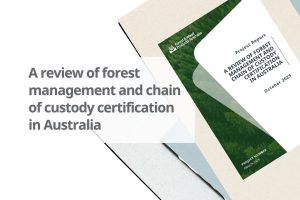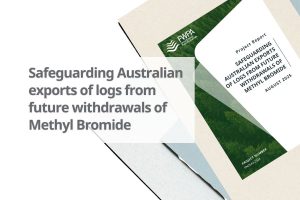A research project that’s looking into the mechanical properties of softwood sawn timber has resulted in the establishment of a world-leading, dedicated timber testing facility in South Australia, from which industry is likely to reap rewards for years to come.
The state-of-the art laboratory, established at The University of South Australia’s (UniSA) Mawson Lakes campus, has been fitted with the latest machinery from around the world. Combined with improved testing methods and processes, and innovative software programs, the facility is set to benefit Australia long-term through significant advancements in timber testing capacity and capabilities.
The inaugural project being conducted out of the new lab will determine the mechanical properties of softwood sawn timber. The information and insights gathered will be used to safeguard the industry, by providing a robust evidence-base to demonstrate timber product properties as required by industry standards. The work will help confirm confidence amongst existing and emerging markets, opening the door for potential new applications.
Some of the information generated from this study will assist softwood manufacturers when confirming the compliance of their products under various industry standards, including AS/NZS1748 Timber – Mechanically stress-graded for structural purposes.
As part of the project, which is being led by UniSA with funding from industry collaborators, as well as the National Institute for Forest Products Innovation (NIFPI), researchers are capturing a representative sample of softwood sawn-timber production from 13 participating Australian sawmills over a full year of production.
Using the lab’s newly installed machinery, timber samples will undergo testing for bending, tension and compression, with associated moisture and density information also captured. To support the process, the UniSA Information Technology team has developed rigorous data capture and storage software to keep track of the samples and reduce the risk of data mishandling.
Researchers will analyse test results and provide accurate information to industry on the structural properties of their sawn timber products, which it’s hoped will empower industry to broadly promote the many performance benefits associated with timber.
“The establishment of this new facility is so exciting because it represents a significant development in Australian timber testing capabilities, which will be invaluable for equipping the industry with an ongoing understanding and database of timber properties and performance,” said Andy McNaught, Chair of the AFPA Solid Wood Products Technical Committee.
Going forward, the new testing facility will be opened up to industry in support of their own testing projects, including those focused on structural works, architecture and construction project management.
UniSA has also made a commitment to using the facility to support the education of students on the use of timber in construction. The goal is to ensure a cohort of future construction professionals familiar with timber as a primary and desirable construction material.
The impact of the bushfires and COVID-19
While the summer’s bushfires and COVID-19 both caused some disruption to the softwood sawn timber mechanical properties testing program, progress is still being made thanks to an adapted approach.
For instance, it is crucial the sawn timber that’s sampled, tested and analysed is representative of each mill’s normal yearly production. Because the quantity of bushfire-affected material in 2020 is not typical or representative based on historic trends, the researchers made the decision not to sample material from mills using bushfire-affected and salvaged logs.
To ensure the trial is not compromised by the impacts on the market of COVID-19, instead of sampling throughout the whole of 2020 as originally planned, the participating mills will now be asked to determine which 12-month period of 2020/2021 is most representative of their normal production.
The project completion date will be delayed to accommodate these modifications, and the next steps will include a launch event for industry stakeholders at the South Australian testing facility at a time when it is deemed to be safe.



